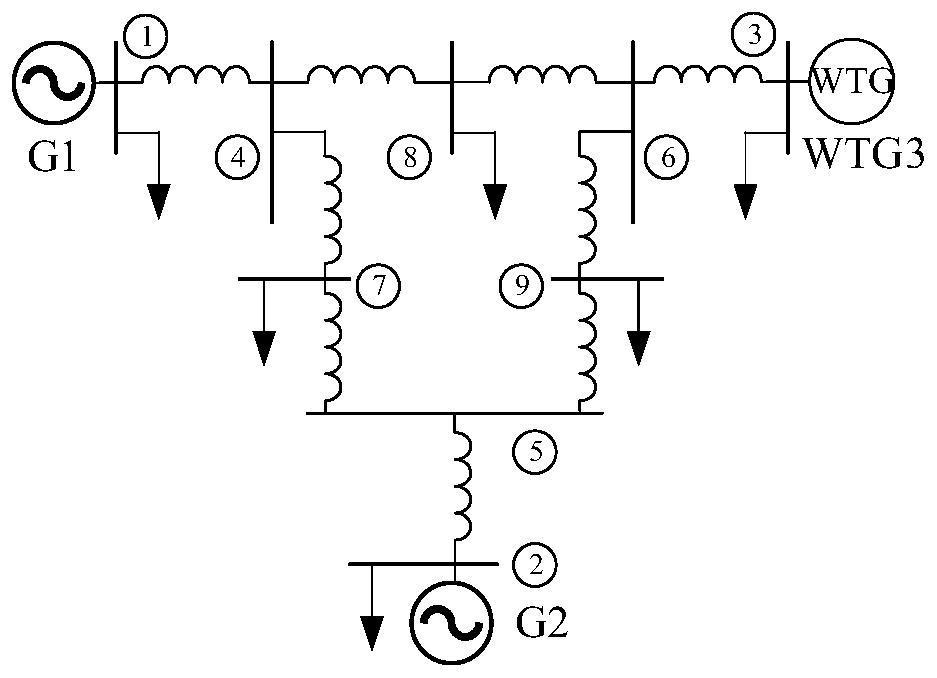System frequency characteristic quantitative evaluation method considering frequency secondary drop
A system frequency, quantitative evaluation technology, applied in the direction of calculation, reducing/preventing power oscillation, instruments, etc., can solve problems such as difficult to analyze frequency response, and achieve the effect of high precision
- Summary
- Abstract
- Description
- Claims
- Application Information
AI Technical Summary
Problems solved by technology
Method used
Image
Examples
specific Embodiment
[0124] Establish a three-machine power system in Matlab / Simulink software, such as figure 2 shown. The capacities of synchronous machines G1 and G2 at nodes 1 and 2 in the figure are 200MVA and 100MVA respectively, and the prime movers are steam turbines. The capacity of doubly-fed wind turbine WTG3 at node 3 is 100MVA. Nodes 4-6 are network nodes. Nodes 7 to 9 are load nodes, and the load is a constant power load. Network nodes and load nodes are collectively referred to as constant power nodes. The line is purely inductive, and the line parameters are shown in Table 1 when the capacity of G2 is used as the reference value for the standard unit. In steady state, the voltage of each node is converted to 1, and the phase angle difference of each line is converted to 0.
[0125] Table 1 The line reactance value in the simulation verification of the embodiment
[0126] X 14
0.05 X 25
0.15 X 36
0.05 X 47
0.1 X 48
0.1 X 57
0.2 X 5...
PUM
 Login to View More
Login to View More Abstract
Description
Claims
Application Information
 Login to View More
Login to View More - R&D
- Intellectual Property
- Life Sciences
- Materials
- Tech Scout
- Unparalleled Data Quality
- Higher Quality Content
- 60% Fewer Hallucinations
Browse by: Latest US Patents, China's latest patents, Technical Efficacy Thesaurus, Application Domain, Technology Topic, Popular Technical Reports.
© 2025 PatSnap. All rights reserved.Legal|Privacy policy|Modern Slavery Act Transparency Statement|Sitemap|About US| Contact US: help@patsnap.com



